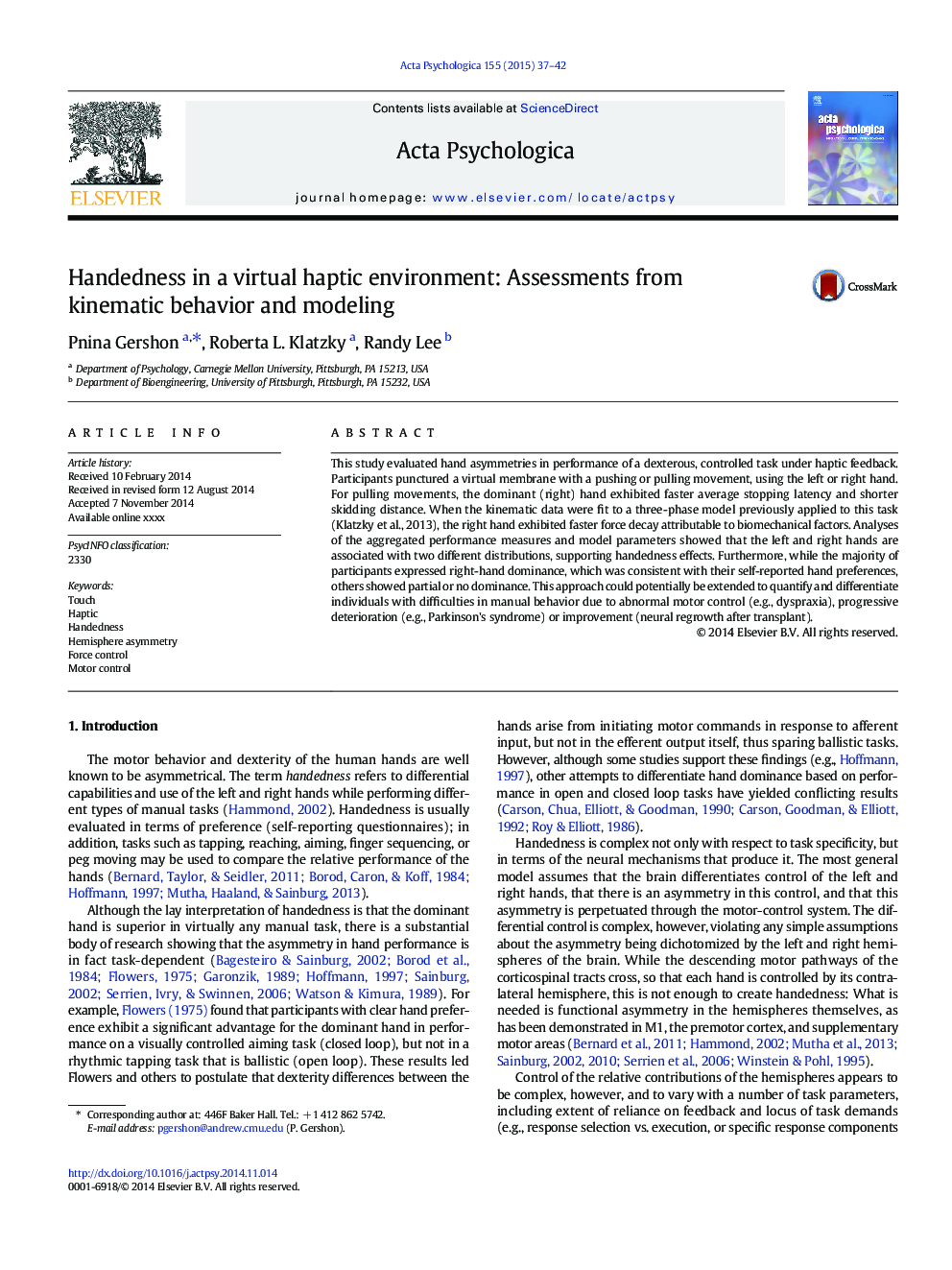| Article ID | Journal | Published Year | Pages | File Type |
|---|---|---|---|---|
| 7277497 | Acta Psychologica | 2015 | 6 Pages |
Abstract
This study evaluated hand asymmetries in performance of a dexterous, controlled task under haptic feedback. Participants punctured a virtual membrane with a pushing or pulling movement, using the left or right hand. For pulling movements, the dominant (right) hand exhibited faster average stopping latency and shorter skidding distance. When the kinematic data were fit to a three-phase model previously applied to this task (Klatzky et al., 2013), the right hand exhibited faster force decay attributable to biomechanical factors. Analyses of the aggregated performance measures and model parameters showed that the left and right hands are associated with two different distributions, supporting handedness effects. Furthermore, while the majority of participants expressed right-hand dominance, which was consistent with their self-reported hand preferences, others showed partial or no dominance. This approach could potentially be extended to quantify and differentiate individuals with difficulties in manual behavior due to abnormal motor control (e.g., dyspraxia), progressive deterioration (e.g., Parkinson's syndrome) or improvement (neural regrowth after transplant).
Related Topics
Life Sciences
Neuroscience
Cognitive Neuroscience
Authors
Pnina Gershon, Roberta L. Klatzky, Randy Lee,
